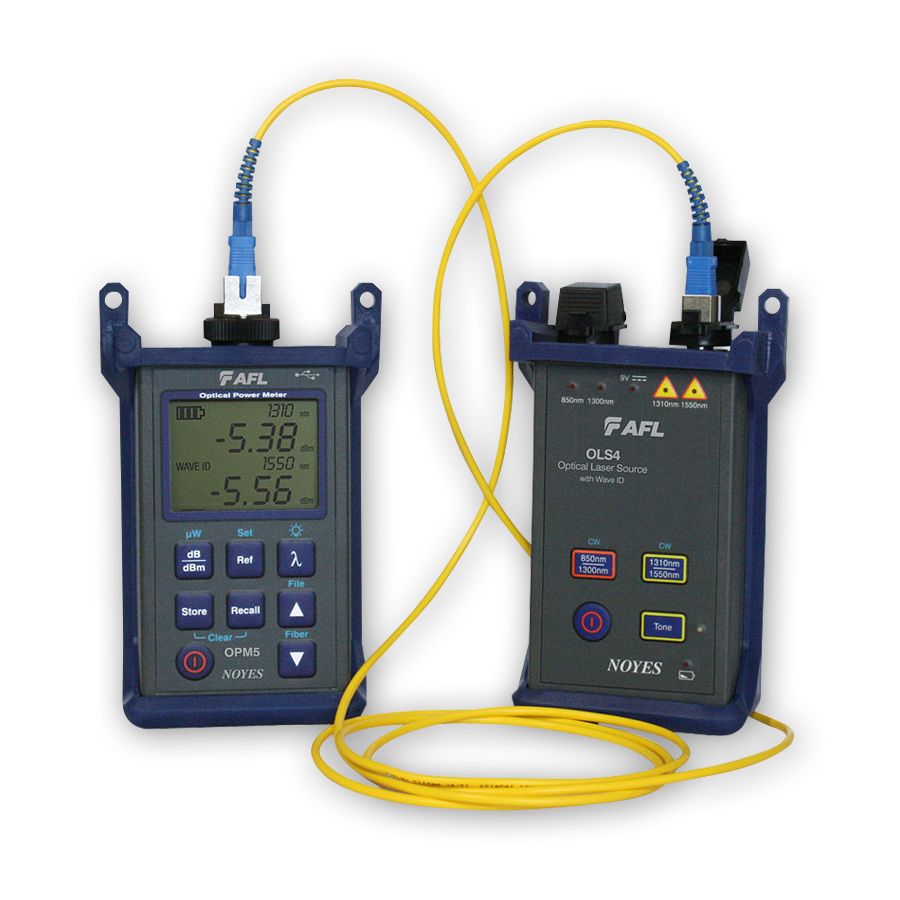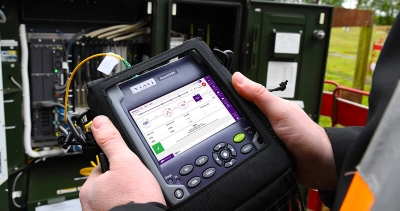The Value of an Optical Fibre Diameter Analyser in Keeping Market Specifications
The relevance of an Optical Fibre Diameter Analyser can not be overemphasized in the context of sector requirements. This innovation guarantees accurate measurements, which are vital for optimal signal transmission and minimized attenuation. By discovering variances early, producers can support strict quality control measures. However, the effects of these dimensions prolong beyond conformity. Uncovering the more comprehensive effect on system efficiency reveals intricacies that warrant further exploration.
Comprehending Optical Fibre Diameter Analysis
Optical fibre diameter analysis plays an important duty in guaranteeing the performance and reliability of fibre optic systems. Accurate dimension of fibre diameter is vital, as it straight affects signal transmission effectiveness and overall system integrity. Variants in diameter can result in raised attenuation, reduced transmission capacity, and higher susceptibility to environmental aspects.
By employing specific measurement strategies, producers can keep stringent quality assurance, guaranteeing that fibers meet market standards. This evaluation additionally assists in the identification of flaws or variances throughout manufacturing, permitting timely rehabilitative actions.
Understanding the diameter criteria help in the selection of proper adapters and installations, thus boosting compatibility within the network. Overall, complete optical fibre diameter evaluation is a foundational aspect of fibre optic innovation, underpinning innovations in telecommunications, data transmission, and different applications throughout various sectors.
Key Functions of Optical Fibre Diameter Analysers
Optical fibre diameter analysers are furnished with numerous vital features that enhance their capability. Notable among these are precision measurement capabilities, which ensure precise readings, and real-time tracking functions that give prompt responses throughout the evaluation process. Additionally, an easy to use user interface layout promotes simple procedure, making these gadgets easily accessible to a broader series of individuals.
Accuracy Dimension Capabilities
When it pertains to assuring high-quality fibre production, accuracy dimension abilities are vital in diameter analysers. These tools use innovative technologies to deliver accurate dimensions of fibre diameter, enabling makers to keep stringent tolerances. High-resolution optics and innovative formulas allow the detection of min variants in diameter, necessary for creating reputable and consistent optical fibers. In addition, the capability to measure across a wide variety of diameters boosts convenience, fitting various manufacturing requirements. The combination of calibration requirements guarantees that measurements stay accurate with time, decreasing the threat of flaws. By employing these precision measurement abilities, manufacturers can maintain industry requirements, improve product top quality, and eventually drive consumer fulfillment in the competitive fibre optics market.
Real-Time Surveillance Attributes
Real-time surveillance attributes are necessary for enhancing the efficiency and performance of fibre production procedures. These capabilities allow continual assessment of optical fibre diameter throughout production, guaranteeing that any type of deviations from defined requirements are quickly spotted. By supplying instantaneous feedback, producers can immediately readjust parameters, reducing waste and preserving quality assurance. In addition, real-time surveillance facilitates the recognition of trends and patterns in production data, using beneficial insights for process optimization. The integration of these functions right into optical fibre diameter analysers sustains proactive decision-making, empowering operators to respond quickly to prospective concerns. Subsequently, the execution of real-time surveillance not just upholds industry standards however likewise enhances general efficiency and product dependability.
User-Friendly User Interface Style
A well-designed interface is crucial for the reliable procedure of optical fibre diameter analysers. Such user interfaces prioritize simpleness and availability, enabling users to navigate the system effortlessly. Trick attributes usually consist of user-friendly menus, clear visual representations of data, and personalized setups to fit various customer preferences. Real-time feedback devices improve the user experience by giving prompt insights into dimensions. Additionally, reliable error messaging overviews individuals in troubleshooting concerns quickly, lessening downtime. The incorporation of touchscreens and receptive styles further promotes interaction, making it easier for technicians to run the analyser in diverse environments. Ultimately, a straightforward interface not just improves effectiveness but likewise boosts the general accuracy of the measurements, adding to industry standards in optical fibre production.
The Function of Diameter Dimension in Quality Control
Diameter measurement may seem like a minor information in the manufacturing of optical fibres, it plays a considerable duty in ensuring overall high quality control. Uniformity in diameter is important for preserving the optical efficiency and architectural integrity of the fibres. Variations in diameter can bring about issues such as signal loss, enhanced depletion, and lowered tensile strength, eventually compromising the integrity of the fibre in numerous applications.
Quality assurance processes incorporate accurate diameter dimension to find issues early in manufacturing. By carrying out an optical fibre diameter analyser, manufacturers can identify any discrepancies from specified tolerances, helping with immediate corrective actions. This proactive strategy not just boosts item quality but also reduces waste and decreases production costs.

Conformity With Sector Criteria and Laws
Conformity with sector criteria and policies is important for the exact operation of an optical fibre diameter analyser. Adhering to these guidelines assurances that suppliers keep quality control throughout the production process. Satisfying governing needs not just enhances product integrity yet also promotes consumer trust.
Ensuring Quality Assurance
Making certain adherence to sector criteria is essential for preserving the stability and performance of optical fibre products. Quality control plays a critical function in this process, as it involves the systematic monitoring of fibre diameter to guarantee consistency and integrity. An optical fibre diameter analyser is a critical device in achieving these top quality standards, providing precise dimensions that aid recognize Learn More inconsistencies from developed specs. By utilizing this technology, suppliers can promptly identify and attend to any type of anomalies, guaranteeing that products fulfill the needed performance criteria. Normal evaluation through such analysers not just sustains product quality however also boosts client count on and complete satisfaction. Ultimately, durable quality assurance steps foster an affordable edge in the optical fibre industry, advertising long-lasting success and conformity with requirements.
Meeting Governing Demands
As makers navigate the intricacies of the optical fibre industry, conference regulatory needs becomes crucial for ensuring item security and efficiency. Compliance with market standards not only mitigates prospective risks however likewise boosts customer confidence in the products provided. An optical fibre diameter analyser plays an important duty in this process, allowing makers to confirm that their items stick to defined measurements and tolerances. By using such analyzers, companies can guarantee that their optical fibres satisfy the rigorous regulations set forth by industry authorities. This positive method to quality control not just facilitates conformity yet also improves the production process, decreasing the possibility of expensive recalls or beings rejected. Ultimately, adherence to regulative requirements is crucial for maintaining a competitive edge out there.
Benefits of Accurate Diameter Measurement

Accurate diameter dimension plays an essential duty in the efficiency and dependability of optical fibres. Guaranteeing that fibers fulfill specified diameter tolerances minimizes signal loss and takes full advantage of transmission efficiency, directly influencing general system performance. This accuracy is crucial in preserving suitable light proliferation, as even small variances can result in increased depletion and reduced optical signal quality.
Accurate dimensions enhance compatibility in between components in fibre optic systems, facilitating smooth integration and decreasing the risk of failures. Regular diameter dimensions additionally contribute to improved manufacturing procedures by determining possible problems early, subsequently reducing waste and decreasing production expenses.

Integrating Optical Fibre Diameter Analysers Into Manufacturing
Incorporating optical fibre diameter analysers right into production processes boosts the capacity to preserve rigid quality assurance measures. By employing these analysers, producers can accomplish exact and consistent measurements of fibre diameters, which is vital for making certain item efficiency and integrity. The assimilation procedure commonly entails placing analysers at bottom lines along the assembly line, allowing real-time tracking and instant comments on diameter variations.
This proactive method enables quick adjustments to the production criteria, lowering the threat of flaws and waste. In addition, the information collected can be made use of for statistical procedure control, adding to continuous improvement efforts. Operators are encouraged with actionable understandings that help with informed decision-making relating to material use and production strategies. Ultimately, the unification of optical fibre diameter analysers not only boosts product high quality but likewise sustains compliance with market standards, enhancing a business's credibility for excellence in the affordable optical fibre market.
Future Patterns in Optical Fibre Dimension Technology
Arising developments in optical fibre dimension modern technology are poised to reinvent the sector. The incorporation of expert system and device discovering is anticipated to enhance accuracy and performance in diameter analysis. These modern technologies make it possible for real-time data processing, enabling prompt adjustments during production, therefore minimizing waste. In addition, the development of non-contact dimension strategies promises a reduction in physical interaction with fibres, maintaining their honesty.
Additionally, miniaturization of measurement devices is expected to result in more portable and easy to use options, facilitating on-site assessments. optical fibre diameter analyser. Assimilation with IoT systems will enable remote surveillance and information collection, cultivating enhanced predictive upkeep and high quality control
As sectors progressively require higher performance requirements, the development of optical fibre measurement tools will play an important function in satisfying these expectations, ensuring that manufacturers can consistently supply top notch products while adhering to rigorous regulative standards.
Regularly Asked Concerns
How Frequently Should Optical Fibre Diameter Measurements Be Performed?
Regularity of optical fibre diameter measurements typically relies on production quantity and high quality requirements. Normal checks, typically everyday or weekly, assist guarantee consistent top quality and adherence to specifications, minimizing prospective defects in fibre production processes.
What Are the Normal Costs of Optical Fibre Diameter Analysers?
The normal costs of advice optical fibre diameter analysers differ extensively, varying from several thousand to 10s of countless bucks, depending on attributes, precision, and maker, impacting decisions for organizations purchasing high quality dimension technology.
Can Diameter Analysers Be Calibrated On-Site?
Diameter analysers can often be calibrated on-site, enabling immediate modifications to assure precision. The details treatments and requirements may vary depending on the producer's standards and the modern technology utilized in the analyser.
What Kinds Of Fibres Can Be Calculated With These Analysers?
Optical fibre diameter analysers can measure various fibre types, consisting of single-mode, multi-mode, specialized, and large-core fibres. Each type needs specific calibration settings to ensure precise and dependable diameter dimensions throughout the production procedure.
Are There Particular Upkeep Demands for Diameter Analysers?
Diameter analysers need regular calibration to assure precision, in addition to routine cleaning to avoid particles buildup. In addition, checking software updates and evaluating mechanical parts add to their excellent performance and durability in gauging fibre sizes efficiently.